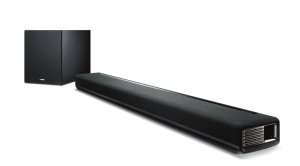In anticipation of doing a MacVoices podcast tonight (with host Chuck Joiner), I had worked up a draft of an article I planned to post here — covering a topic I intended to discuss on the podcast. The article started off by asserting:
If Apple cares about its customers, and not only its profits, it should end production of the Mac Pro. Today. If the model is dead, bury it already. Why continue to sell a machine that Apple knows is doomed? If a replacement is in the works, Apple should still get this stinker off the shelves immediately — so there is no chance that someone makes the bad choice of buying one.
A few paragraphs later, I added:
Even if a new Mac Pro emerges, it’s hard to imagine how this would spur sales. Would a minor update suddenly renew interest in the desktop machine? I doubt it. Even with a major overhaul, users would likely be wary of Apple’s future commitment to the machine. Would you want to buy an updated Mac Pro that could very well see no further attention from Apple until 2021? Or perhaps never again? To counter this resistance, Apple would need to convince users of their ongoing commitment — something more than just releasing the new model. This could involve revealing a specific roadmap for the future of the Pro, confirming that regular updates would be coming. Unfortunately, given Apple’s penchant for secrecy about its future plans, I doubt they would be willing to be that specific.
As it turns out, I’m very glad I held off posting the article. That’s because Apple this morning revealed that a completely new revamped Mac Pro — together with new “pro displays” — are coming (next year). Had I posted my article yesterday, Apple’s announcement would have made the bulk of what I wrote instantly irrelevant. Whew!
It wasn’t entirely irrelevant. To my surprise, Apple agreed with my advice that now was the time to reveal its Mac Pro plans — secrecy be damned!
On the other hand, Apple disagreed with my advice that it terminate sales of the current Mac Pro. Instead, it’s offering a minor update, with changes to the internal specs (or perhaps more accurately a price drop to current specs) but no USB-C or Thunderbolt 3 ports. I still don’t see how this will lead to any new sales of the current model. But I suppose it doesn’t cost much for Apple to take this path.
Overall, Apple’s announcement is great news! For people (like me) who were increasingly convinced that Apple was planning to abandon the Pro, and perhaps desktop Macs altogether, this is a perfect instance of “better late than never.”
Here’s a brief overview of how today’s announcements change the Apple landscape:
For starters, it’s worth reading Gruber’s article describing what transpired at the meeting with Apple where all of this was revealed yesterday. It describes Apple’s explanation for why the Mac Pro situation wound up deteriorating so badly. Essentially, Apple miscalculated when they designed the current Mac Pro. They bet on a dual-GPU design and a preference for external expansion. Both were bad bets. Apple had trouble recovering from this — and that led to the delay of any improvement to the current model. Apple is finally rectifying this error.
Regardless, this will still go down as a major embarrassment for Apple. As its name implies, the Mac Pro is the machine designed for the “professional” user. These are the users who place the most demands on a computer, the ones who most need a machine that is on the cutting edge of current technology and are the most willing to pay extra to have such a machine. If any item in Apple’s line-up screams out for frequent updates, it would be the Mac Pro. Instead, it will likely be five (5!) years or more between the Mac Pro’s original announcement in June of 2013 to its replacement. It should never have come to this. But, again, better for Apple to fix this late than never do it at all.
Will today’s announcements be enough to stem the tide of pro users leaving the Apple platform? Will such users be willing to wait another year or more for the promised replacement? Can we trust Apple’s promise that this new model will continue to get attention and frequent updates in the years that follow?
I don’t know. I doubt that anyone does. It’s now a time for “wait and see.”
While the Mac Pro is the most egregious example of Apple’s lack of attention to desktop Macs, the problem extends to the rest of the desktop Mac line: the iMac and the Mac mini.
The Mac mini hasn’t been updated since late 2014 — and that update almost qualified as a downgrade (dropping quad-core options and making the machine’s internals far less accessible). Does Apple intend to update the mini anytime soon? They wouldn’t say at yesterday’s meeting, other than for Phil Schiller to cryptically comment: “The Mac Mini remains a product in our lineup, but nothing more to say about it today.”
The news is much better for the iMac, which hasn’t seen an update since late 2015. Apple announced plans to release new models before the end of this year, “including configurations specifically targeted at large segments of the pro market.”
I concluded my not-posted article by stating: Continuing to let aging products limp along in an almost zombie-like state is not smart marketing.
I believe that’s still true. Belatedly, Apple appears to have recognized this — and acted accordingly. We can now all take a deep breath and exhale with a sigh of relief. Our worst fears were not realized. Apple’s desktop Macs are not doomed after all. Time, once again, to look forward with anticipation.


